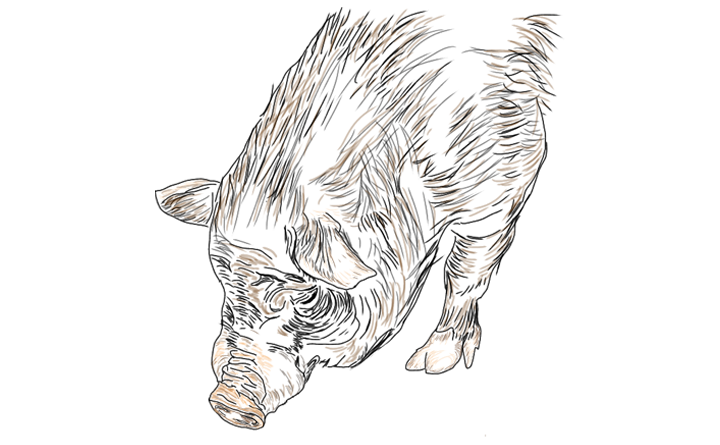It looks like vegan meat is really becoming a thing now.
Actually, it’s not just vegan meat; cultured meat is also gaining attention. In any case, the population explosion and associated food crisis is becoming real, and there are more and more startups emerging to address the food challenge. For example, the plant-based meat substitute producer Beyond Meat went public on the NASDAQ exchange in May of last year and continues to grab the spotlight, with a help of ever-increasing environmental concerns.
“(If they have no bread,) let them eat cake.”
This famous quote has been attributed to Marie-Antoinette (although it looks like she never actually said it). It was actually Jean-Jacques Rousseau who first introduced this phrase in his book, Confessions:
“Enfin je me rappelai le pis-aller d’une grande princesse à qui l’on disait que les paysans n’avaient pas de pain, et qui répondit : Qu’ils mangent de la brioche.”
Jean-Jacques Rousseau " Confessions "
(At length I remembered the last resort of a great princess who, when told that the peasants had no bread, replied: "Then let them eat brioches.”)

Okay, so, vegan meat. True, plant-based meat substitutes are booming these days. “If we have no meat, then let us eat soy meat.” Maybe this is the solution. But is it? Plant-based meat substitutes are mainly made from beans and peas, so let’s take this into account and think about this issue.
The world’s soybean consumption has been rising with a pace that surpasses the already-exploding population growth rate (the world’s population increased by 2.5 times compared to the 1970 level, while soybean consumption jumped up by 9.3 times in the same period). Soybeans are largely used to produce animal feed (soybean meal) and cooking oil (soybean oil). Globally, approximately 350 million metric tons (MMT) of soybeans are produced annually, but it is worth noting that just three countries (United States, Brazil, and Argentina) are producing 80% of the world’s soybeans; this is a very uneven distribution of production (note that the US and Brazil/Argentina have opposite seasons so their productions don’t overlap; there is a half a year difference in their harvest time).

In terms of consumption, China is the top consumer (about 100 MMT per year), followed by the US, Argentina, and Brazil; when combined, these four countries comprise nearly 80% of the world’s total soybean consumption. The total global export of soybeans is 150 MMT per year, of which 90 MMT goes to China. Shocking, isn’t it?
China is fastidious about maintaining the nation’s grain self-sufficiency due to its bitter experience of the Great Chinese Famine during the Great Leap Forward from 1958 to 1962. Therefore, the government’s target has been to maintain a full self-sufficiency of the main crops (rice, wheat, corn) to feed its 1.4 billion population. As a result, achieving a full self-sufficiency for soybean production just turned impractical under this policy. As the living standard of the Chinese population increased, the demand for animal feed soy product (soybean meal) has also risen, and the government had no choice but to rely on import to avail a huge amount of soybean. This situation is particularly true since after 2001.
Obviously, this has impacted the global soybean production. As mentioned earlier, 90 MMT of the 150 MMT is exported to China, so this demand has caused farmers in the US, Argentina, and Brazil to convert to soybean production. Nowadays, soybean production surpasses wheat production in the US, and in Brazil and Argentina, the area dedicated for soybean production is larger than all the areas for other types of crop combined (thus, we could say this is a monoculture economy driven by the global economy).
Many are greatly concerned with the disappearing Amazon forests in South America. When we think about the direct cause of forest destruction in Brazil, which is to increase agricultural land for soybean production and cattle grazing, it is implicit that the tropical forest destruction will never stop if we continue cutting trees to develop agricultural land like this. That means, China would need to cut its soybean imports which are largely used to feed livestock. Meaning, China would consequently need to cut pork consumption. But, let’s be clear that this is not about China alone. Ultimately, the Amazon forest is being destroyed because there is an economic demand to do so. If we really care about the loss of the Amazon forests, then we would need to eliminate its cause. Our responsibility as consumers is significant (plus, it is unfair to ask Chinese to stop eating pork; that would be equivalent to saying stop eating fish to Japanese or stop barbecuing to Americans).

Recently, amid the US-China Trade War, the Chinese government announced that it agreed to buy soybeans from the US. This has been interpreted as a partial trade deal, hinting an improved relationship, but the real reason is purely economic. China needs soybeans and American farmers want to sell them. Thus, there’s a lopsided relationship of production and consumption there (in a different sense than the iPhone situation!).
According to the Good Food Institute based in the US, whose mission is to promote plant-based alternatives, to produce 1 kg of green beans requires much less natural resource inputs than to produce 1 kg of beef; it requires one-eighteenth or less land, one-tenth or less water, one-ninth or less fossil fuel, one-twelfth or less fertilizer, and one-tenth or less application of pesticides. There is no doubt that plant-based meat alternatives will result in much less environmental impact if we properly manage the shift from conventional meat consumption. However, we must be careful as a drastic and large-scale shift from animal meat to plant-based meat will have a considerable impact on the current agricultural market, slowing down both the livestock and crop industries. In addition, there is the question of how much consumer demand there actually would be for such “fake meat” (“If we eat soy meat, let us just eat soybeans.”).
In Western culture, people who engage in the livestock business have generally had a relatively high social status. The farmers will strongly fight against the decreasing demand for traditional meat, and surely, consumers will also feel conflicted between their moral sense and the rather-pricey-yet-not-so-tasty plant-based alternatives. This is not going to be easy.
Considering the global movement for environmental protection, the market principle, and cultural aspects, plant-based meat substitutes are just a stepping stone towards altering the current meat-based diet. The technology will advance further to culture meat, and eventually, mass production of every type of meat in a factory will be possible, in a way similar to regenerative medicine techniques. The market is waiting for a next level of innovation beyond soy meat.